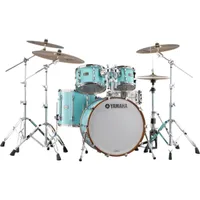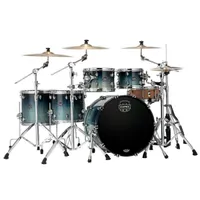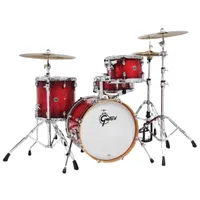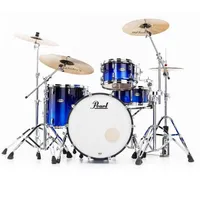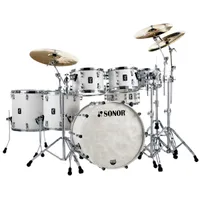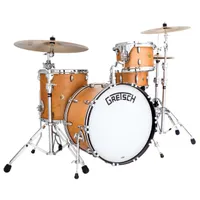Best drum sets 2025: Top drum kits for beginner to pro drummers
Explore the best drum kits from Ludwig, Pearl, Tama, DW, and more
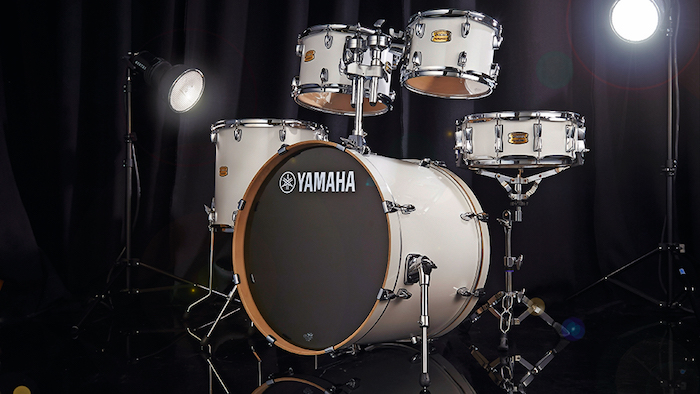
As the beating heart of any band, a drummer needs a good kit to sit behind and set the tempo for everyone else to follow. Buying the best drum set for you doesn't necessarily mean the most expensive, so I've curated a selection of kits that will suit anyone from budget-friendly beginner through to full-on custom specified kits for pro users.
Drum kits are very personal items, and different drummers prefer different types of materials and hardware layouts. These can also differ greatly, as different manufacturers like to offer their own particular take on hardware configurations. What you'll tend to find is that as you gain more experience, you'll find a preference for what you like, so if you're buying for the first time, I wouldn't get too hung up on what the lugs are made out of or the ply and material of the shells.
For those who know what they like and have the money to spend, you need to check out the DW Collector's Series, which features some of the finest kits I've ever come across, available to be customised to your specific needs. If you're new to the instrument, then you should have a look at the Pearl Export, which has been a go-to beginner drum kit for a long time now.
If you'd like to read some expert buying advice to help you choose the best drum kit, we've included some at the end of this guide in our how to choose section. If you'd rather get straight to our recommendations, keep scrolling. We've arranged them in price order to make finding a killer drum set just that bit easier.
My top picks
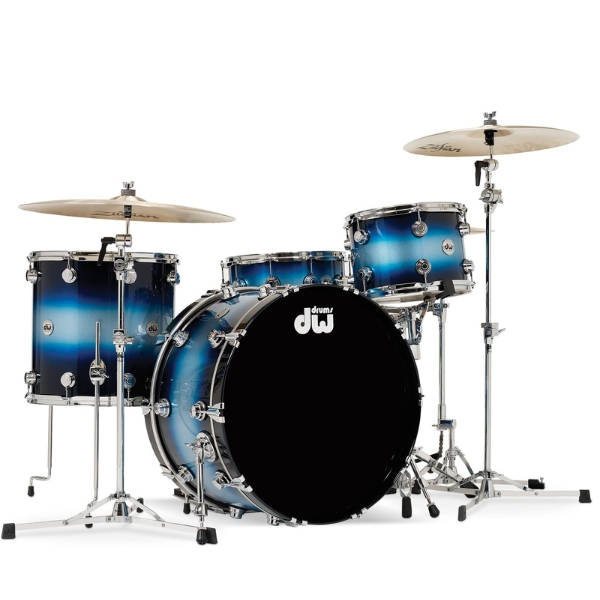
If you want the very best of the best with no expense spared, the DW Collector's Series will tickle your fancy. They're not cheap of course, but being built with incredible attention to detail makes them not only beautiful sounding, but really user friendly too.
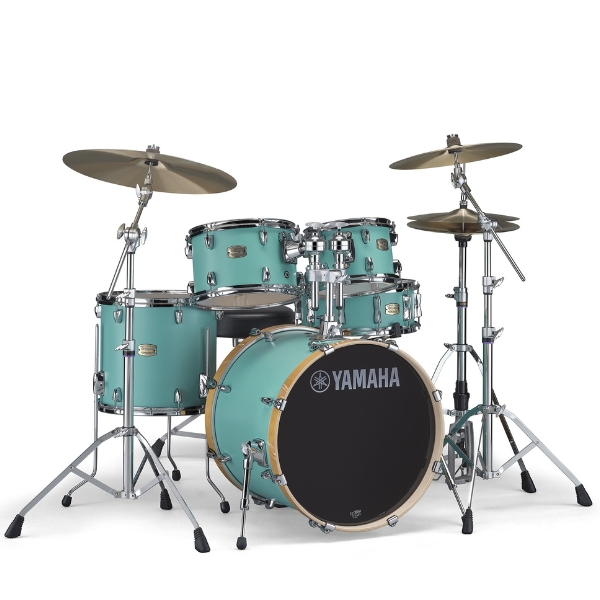
Budget is a relative term when it comes to a quality drum kit, but if you're looking for great value then the Yamaha Stage Custom Birch is my top pick. It delivers a punchy and warm sound for relatively little money, great for beginners or pros alike.
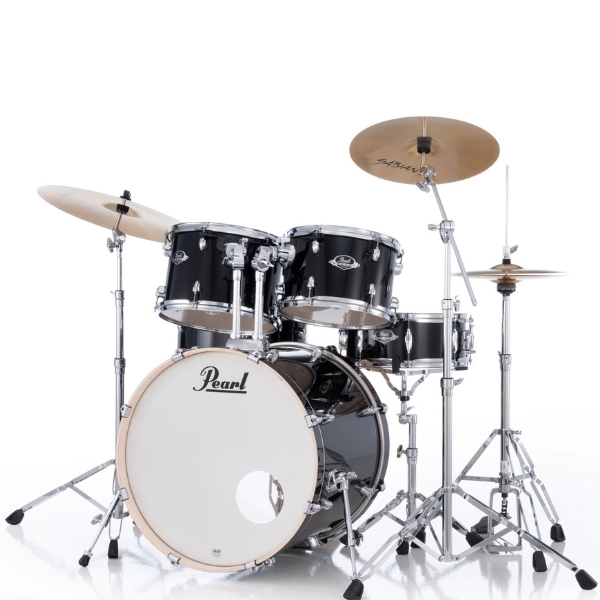
Delivering excellent value for money and packing some rock-solid hardware into the mix, the Pearl Export EXX is a great choice for beginner drummers. You can also get them with cymbals included if you need an all-in-one solution.
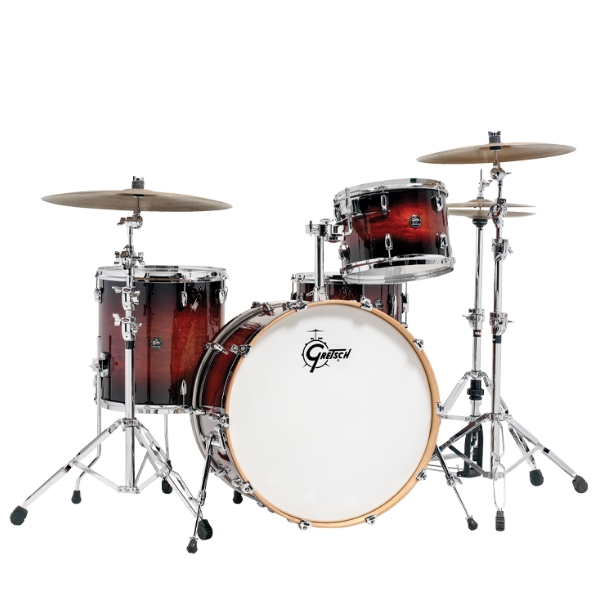
If you're looking to step up from a beginner kit to something a little more 'pro', have a look at the Gretsch Renown. As well as giving you a lot for your money it's super versatile in terms of sound, and I think it looks great too.
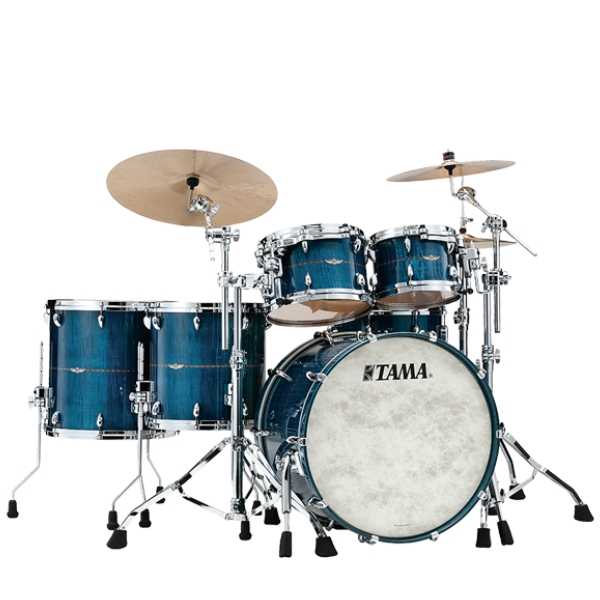
If you're ready to move on to something recording grade or you just want to purchase a great-sounding kit for live playing, I'd go for the Tama Star Maple. It's not cheap but you get superb tones and looks for your money. Well worth the investment.
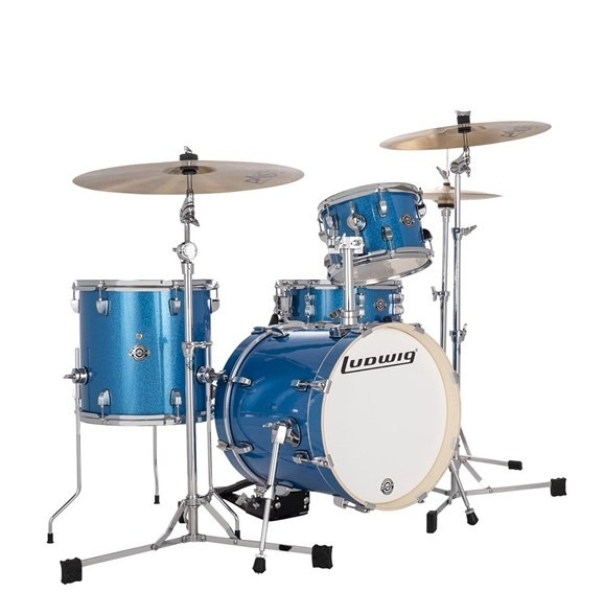
Whether you're just short on space in general or you need a second, smaller kit for home use, the Ludwig Breakbeats is my top choice if you need something compact. Don't let the size fool you though, this thing still sounds great.
Best overall
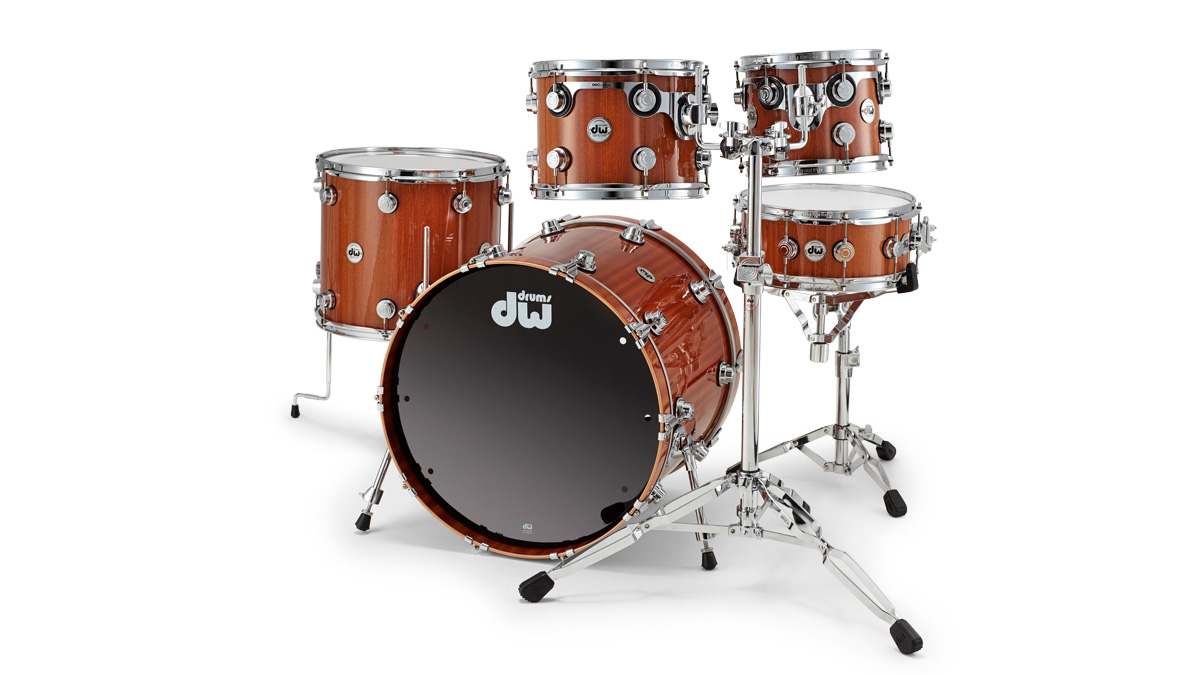
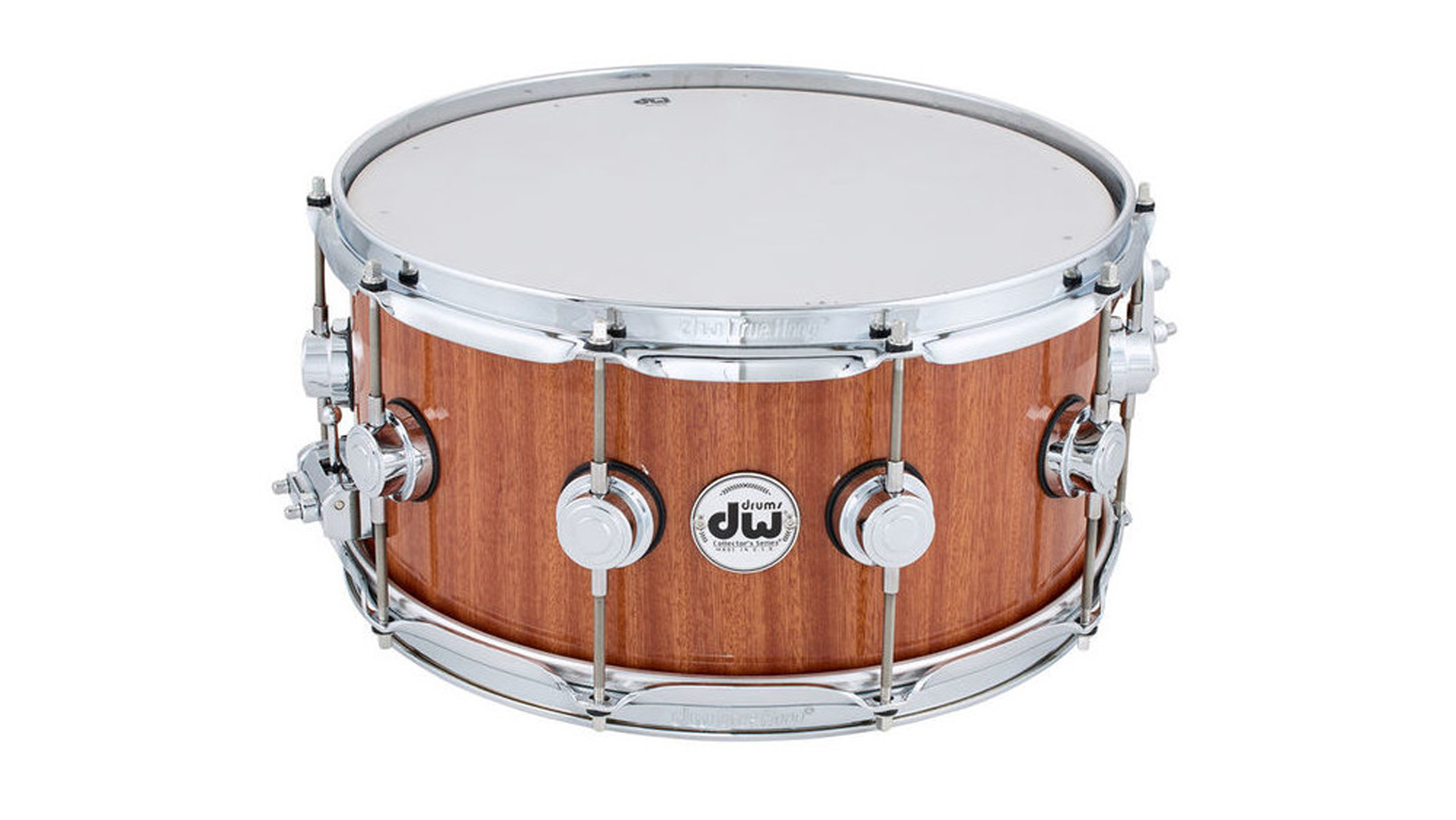
Specifications
Reasons to buy
Reasons to avoid
Drum Workshop's Collector's Series is all about custom drums built to the highest standard. You can choose from an array of shell materials and configurations, plus a huge palette of finishes and hardware options. Pictured is DW’s Cherry/Mahogany drum set. DW had previously used cherry as an outer veneer, but for the first time, it includes cherry as the sole wood in its Pure Wood series.
I found this to be a precisely constructed kit. The shells are round, and the bearing edges are textbook. It sounds as good as a modern kit gets. Mahogany has a warm musicality, and Cherry has a darker sound, so the two complement each other well. The drums are sensitive too, I approached them softly and they still articulated clearly, with the tone opening up immediately once I laid into them a bit more.
DW continues to refine its already awesome Collector's Series. This new hybrid of cherry and mahogany offers a subtle variation of warm, sensitive, and concise tones. But if that doesn’t quite float your boat, there are plenty of other custom options to choose from.

"The shells are round and the bearing edges textbook - so the short answer is it sounds as good as a modern kit gets. Scott Crago, with Eagles legend Don Henley, says, "My drums are absolutely killing out on the road. Don is in love with this kit!""
Read more: DW Collector's Series review
Best value
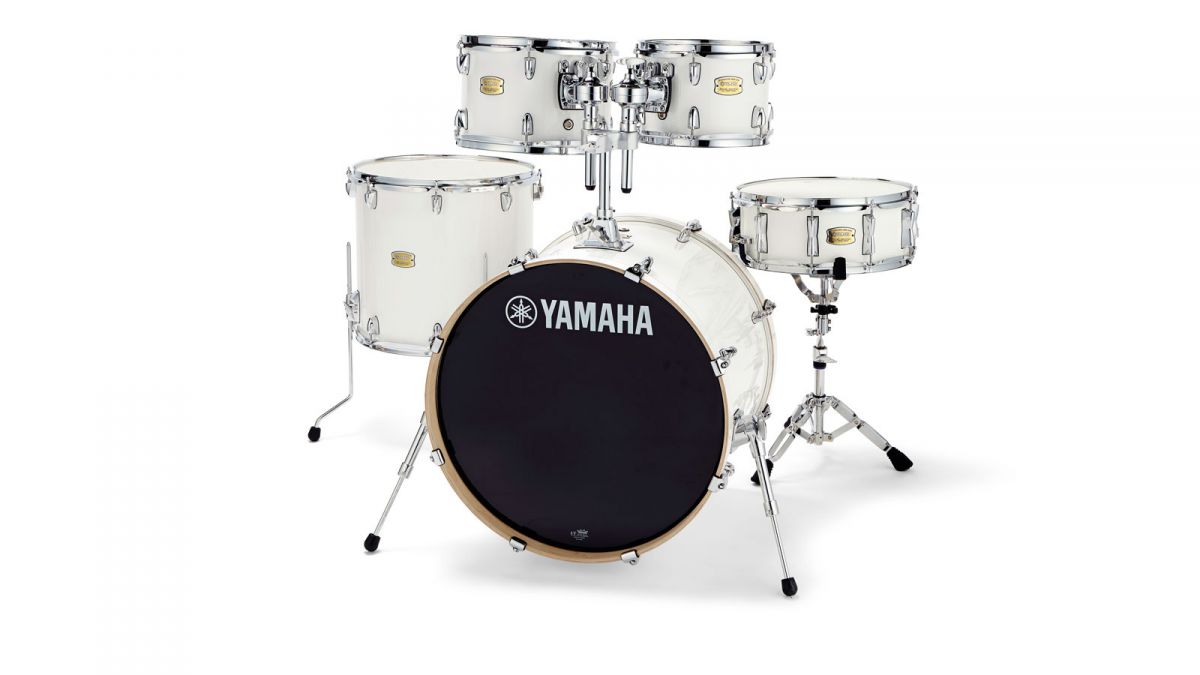
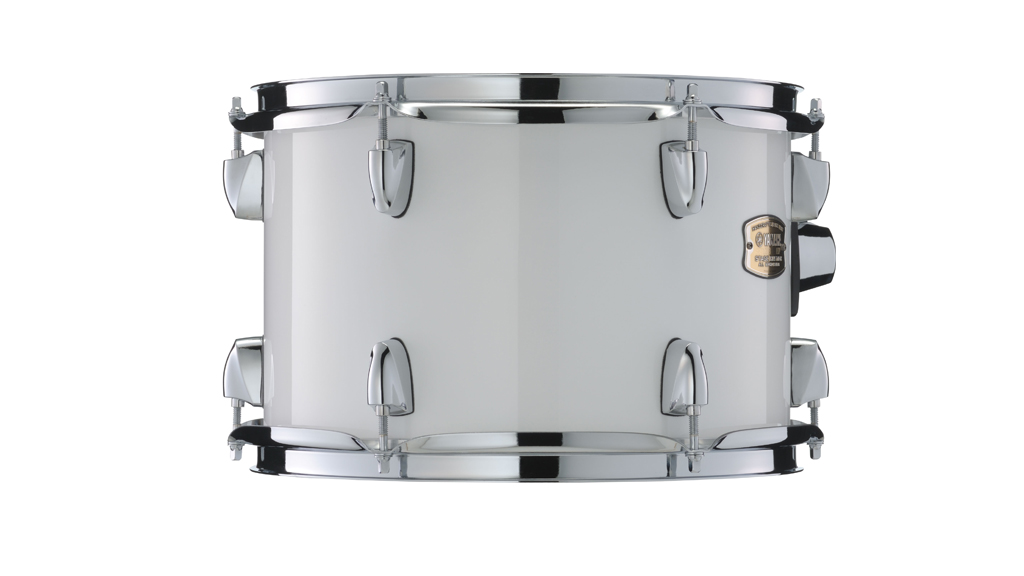
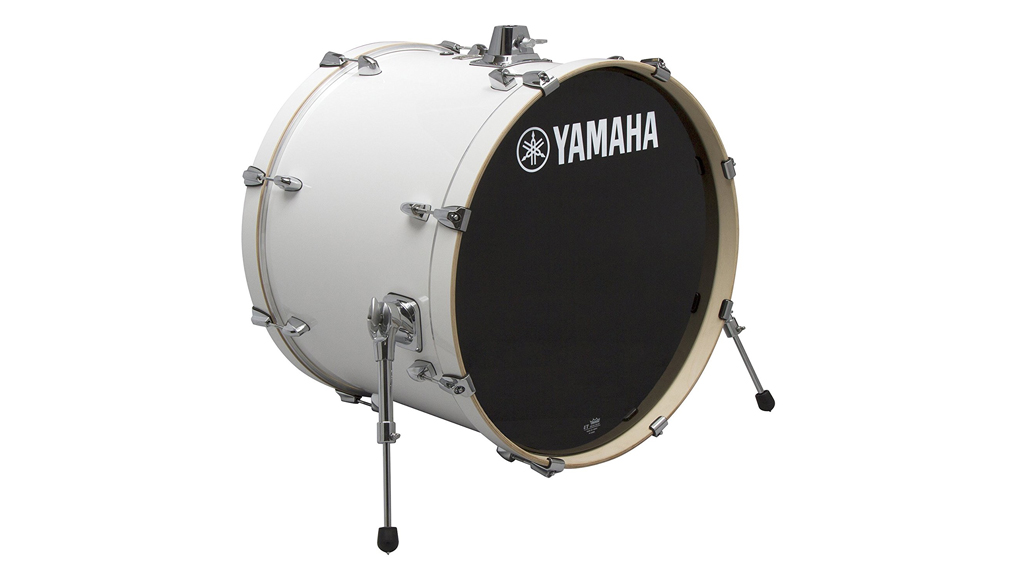
Specifications
Reasons to buy
Reasons to avoid
The Yamaha Stage Custom has been a staple mid-priced kit for over almost three decades, and the brand has continued to evolve the setup to maintain its relevance. Yamaha’s track record of building birch shells speaks for itself. The Stage Custom’s 6-ply shells are 6.6mm thick, straight-sided and butt jointed with Yamaha's distinctive diagonal seams, while bearing edges are carefully cut at 45°.
When I played wide open, the bass drum was right on the money, delivering a massive wallop of low-end. It's an unashamedly resonant kick with a breathy decay. The toms are equally full-on, delivering quick, fat notes at amp-beating volumes. Birch shells generally make for focused-sounding drums, and the toms quickly tune to a point where this is achieved. The snare turns in a typically bright and birch-like performance, tuning variations are taken in its stride, whether tightening to a funky crack or relaxing to an expansive clonk.
Yamaha's credentials run through the Stage Custom Birch like the words in a stick of rock. It's beautifully made, solidly engineered to take the knocks of real life, and produces a quality of sound that defies its price tag. This is a kit that you won’t outgrow in a hurry.

"The first impression I get of the kit is that it's loud - seriously loud. When I unbox the kit we're in the company of another drummer who gladly warms it up while I stand out front. Within moments I'm practically pinned against the wall by a barrage of sound."
Read more: Yamaha Stage Custom Birch review
Best for beginners
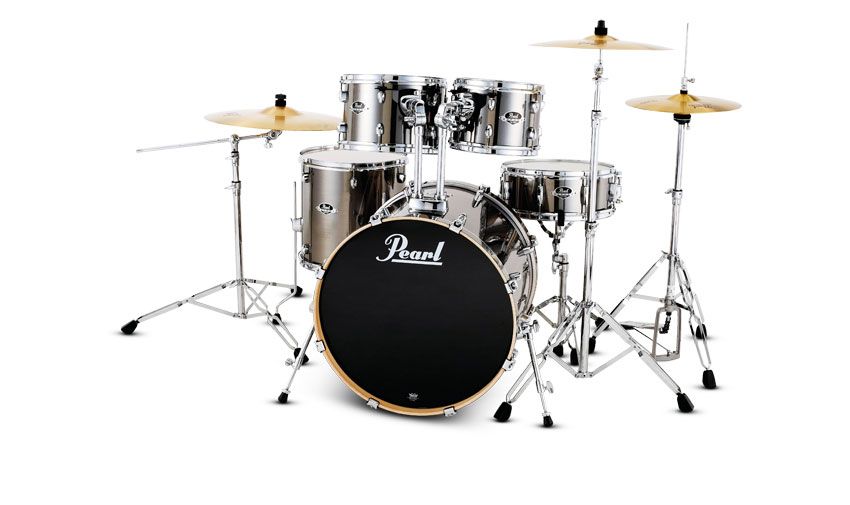
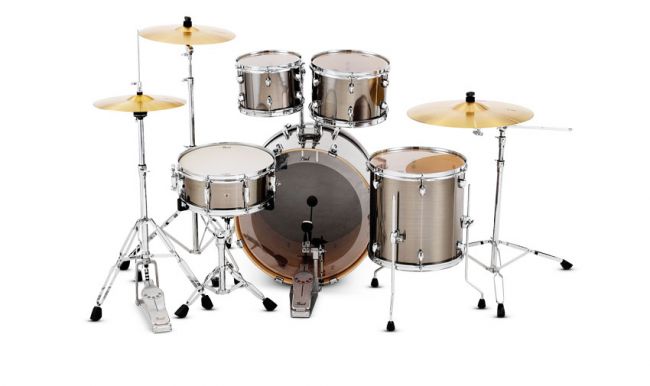

Specifications
Reasons to buy
Reasons to avoid
The arrival of the Pearl Export in 1982 set a new benchmark and in 2007 the kit was revived with upgraded shells, new lugs, new tom bracket and a superb hardware package. The new, smaller sculpted lug with a reduced footprint allows the shells to breathe better. The supplied 830 series hardware pack and brushed silver and orange Demonator bass drum pedal are absolutely brilliant for the money.
Most budget kits at this price have poplar shells, however Pearl has reintroduced Asian mahogany into the mix and that inner lining of semi-hard red wood adds warmth and depth to the shell tone. The tom heads on this EXX model are Chinese-made transparent Remos and deliver the requisite blam with plenty of depth and authority.
Within the world of the Pearl Export, there are a couple of different models - the EXX (pictured) and the EXL. There's not much that separates the two, other than the EXX being covered in a coloured wrap, and the EXL having a gloss lacquer finish. Both look equally nice, but it's worth considering whether you want something more subtle, or something with a bit of 'wow'.
As ever with budget drum kits, I found the snare to be the weakest link. It’s lightweight and takes some judicious tuning before it will yield a decent sound. The rest of the kit, however, sounds little different from a kit three times the price.

"Most budget kits at this price (including the Forum and the previous Export) have poplar shells, poplar being a softer substitute for maple. Pearl has reintroduced Asian mahogany into the mix and that inner lining of semi-hard red wood is not just cosmetic but adds warmth and depth to the shell tone. The tom heads are Chinese-made transparent Remos and deliver the requisite blam with oodles of depth and authority."
Read more: Pearl Export EXX review
Best intermediate
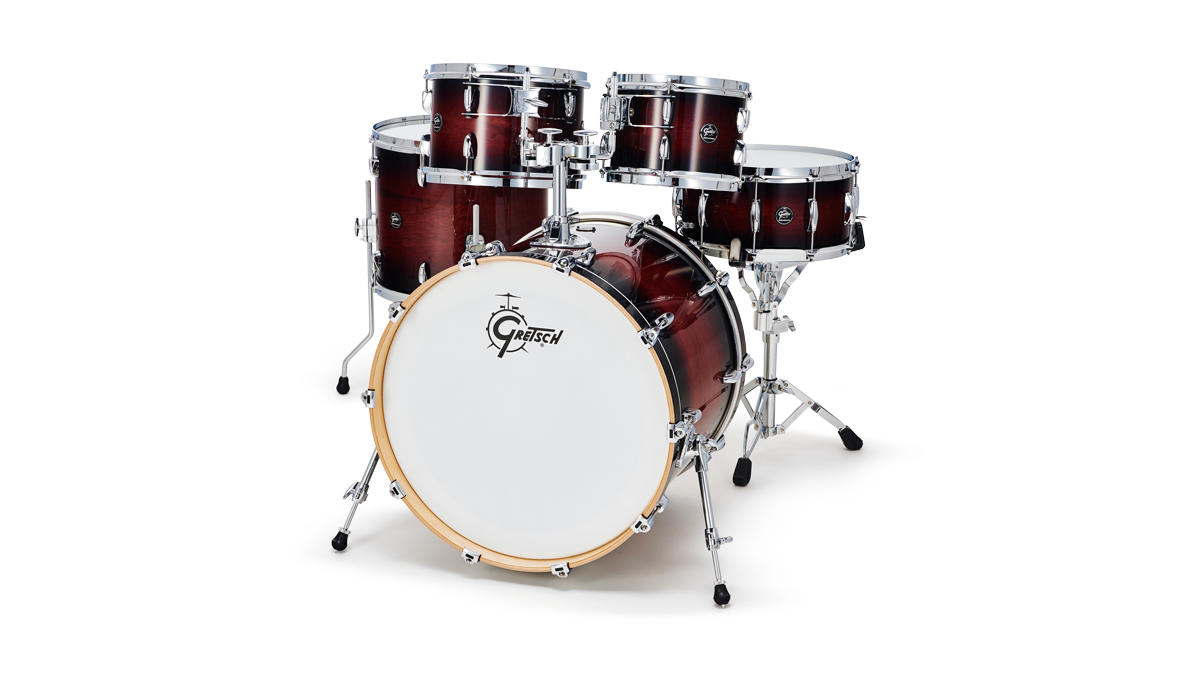
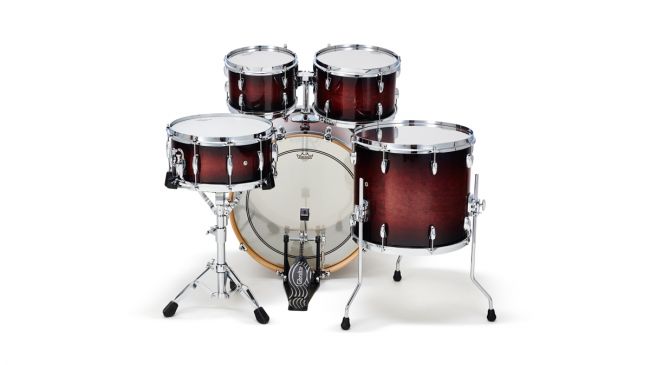
Specifications
Reasons to buy
Reasons to avoid
Gretsch’s Renown series has been a staple for jobbing drummers since its introduction in the early noughties. Their classic Formula shells, 30° bearing edges, and silver sealer interior are present and correct on the Renown, alongside resonance-promoting, double-flanged Gretsch 302 hoops.
Flawless looks belie the price and the hardware, from the tapered T-wing thumbscrews to the Gretsch ‘G’ cast into the memory locks, adds a touch of class. Supplied heads include a Remo P3 on the bass drum, clear Emperors on the toms, and a coated Ambassador on the snare drum. I found it easy to produce a controlled, thick rock tom sound with just a little tension on the batter heads, or a singing, ring-free clarity at medium tension.
The floor tom follows suit with a controlled, beefy thud at lower tunings and clarity when pitched up. The undrilled bass drum sounds huge, too. Tuned low, it’s gutsy and sustained, while adding some tension reveals a more funky punch.

"Take a cross-section of the Gretsch artist roster: session aces like Ash Soan and Karl Brazil, technical titans like Vinnie Colaiuta, rock legends Taylor Hawkins and Charlie Watts, or contemporary tastemakers like Mark Guiliana and Mike Johnston, roll it into one and that sums up the Renown perfectly. It’s a great combination of Gretsch’s heritage vibe, mixed with modern functionality."
Read more: Gretsch Renown review
Best for professionals
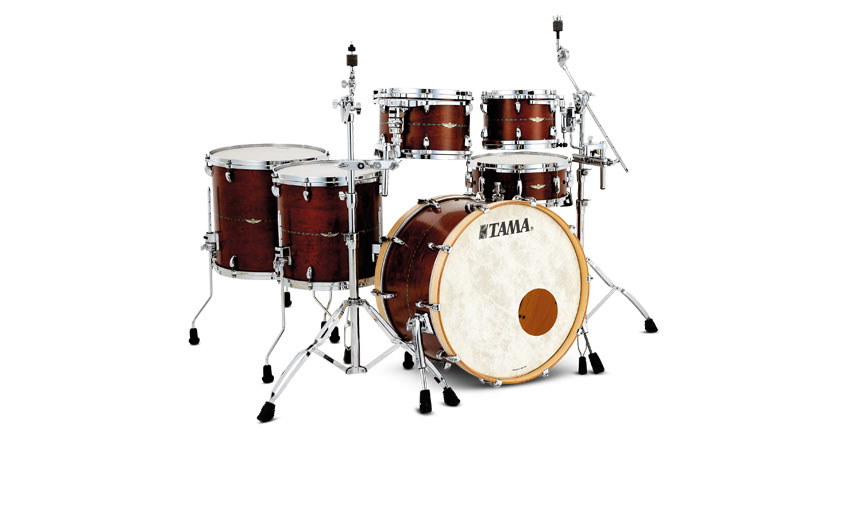

Specifications
Reasons to buy
Reasons to avoid
The primary goal with Tama’s Star was to enhance shell resonance, making it the ideal choice for both professional drum recording and top-end live work. Tama has opted for vintage-style extra-thin shells with Sound Focus (reinforcing) Rings.
Another nod in the vintage direction sees Tama rounding off its bearing edges, allowing broader contact between the head and shell. During my review process, I found that the rounded edges, which are designed to allow the shell tone to make more impact, warmed up the sound delightfully, slightly subduing the attack and controlling the sustain.
The thin shells also promote resonance of the respective woody timbres and bring out the deeper fundamentals. Toms and bass drum have a new cast lug, a bridged design for minimal shell contact with an attractive curvy shape and four-faced ridges.
Hoops are die-cast zinc, more consistent and structurally solid than triple-flangers. Aiding the hoops are Hold Tight washers, which have a stainless steel cup containing a rubber ring. This prevents detuning under modern heavy playing. Tama’s Star Series - also including Bubinga and Walnut options - is another step towards Drum Heaven... albeit at an eye-watering price.

"Rounded edges that mean more of the shell is in contact with the head, allowing the shell tone to make more impact, warming the tone, slightly mollifying the attack and controlling the sustain. But then along come the aggressive die-cast hoops to give stability and make tuning especially easy."
Read more: Tama Star Maple review
Best small drum set
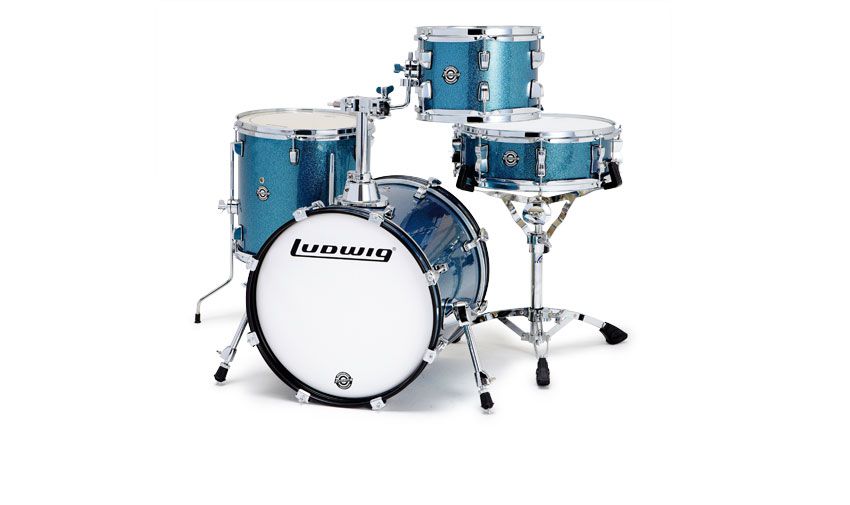
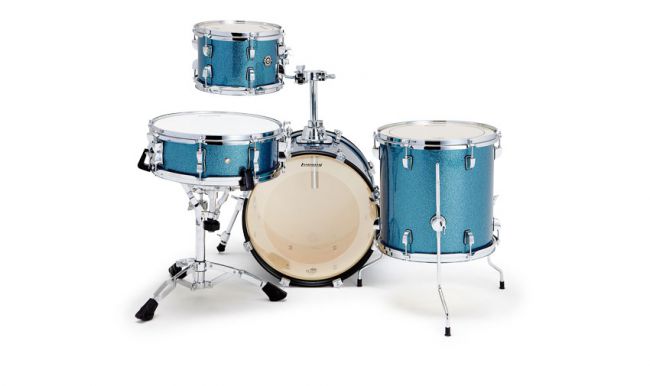

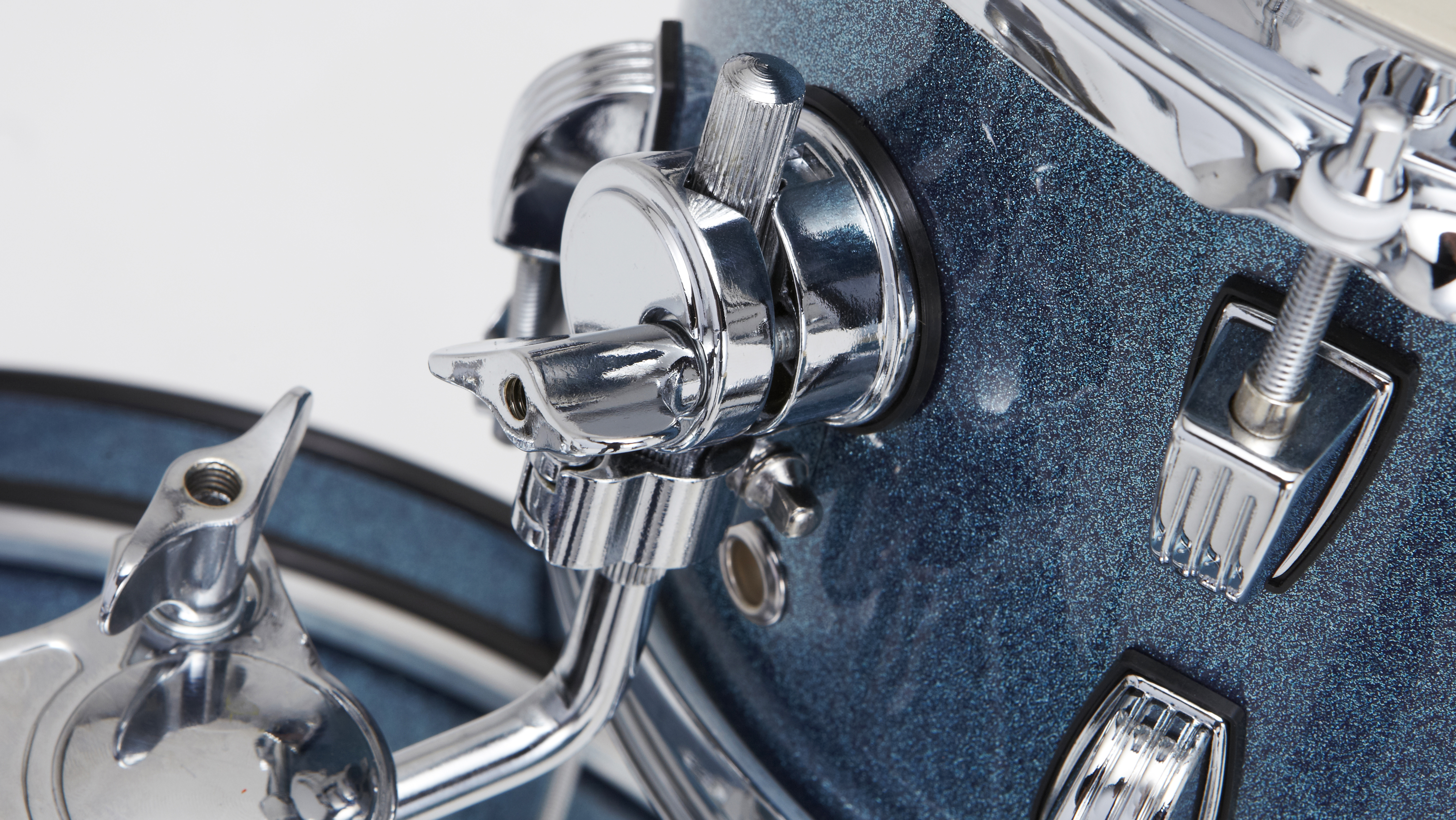
Specifications
Reasons to buy
Reasons to avoid
This small drum set has been considered by many as the king of mini kits for portability, small stages and even for younger players since its launch in 2013. It comprises a 16"x14" bass drum, 10"x7" rack tom and a 13"x13" floor tom, with a standard 14"x5" snare. The chromed shell hardware feels solid in our hands, with a weighty tom-holder, smooth hoops and a sturdy bass drum riser.
The standout piece is the bass drum. It's unlikely to replace a larger kick in a conventional rock set-up, but given the shell construction and size, it’s capable of acting like a small cannon. I found the Breakbeats snare holds a lot of character too – a slight trashy, grittiness, and even at lower tunings, it finds a good combination of crisp response and full-bodied overtones. Cranking it results in a distinctly vintage funk sound.
The small tom diameters don't really lend them a 'power-tom' sound, but we found that it’s possible to coax a fat, clean, sustained note from them at the mid-tension sweet-spot. Originally offered in the Azure Blue Sparkle finish pictured, Ludwig has since introduced Black, White and Red sparkle finishes, as well as the all-new Sahara Swirl. For the money, the Breakbeats is a hard kit to fault.

"We were rather cynical about Questlove's claim that you can fit this kit in a cab. With no taxi to hand, we comfortably transported our review shell pack to a rehearsal studio in the passenger seat/foot well of a tiny car. Ludwig 1, cynics 0."
Read more: Ludwig Breakbeats review
Also consider
Whilst the kits above should cover the vast majority of drummer's needs, I appreciate no two drummers are alike. We've reviewed a lot of drum sets over the years, so here are some more great options for you to look at, each personally tested by a MusicRadar writer.
Yamaha Recording Custom
Birch | 6-ply, 6mm
The Recording Custom - commonly called the Yamaha 9000 - started life in the mid-1970s with Steve Gadd, amongst many other drum session superstars, swearing by its focused, punchy, pre-EQ’d tone. In 2016, with input from Gadd, the Recording Custom was revitalised, updated with a fatter, weightier lug, thinner bass drum shells, sharper bearing edges and even greater manufacturing precision.
★★★★★
Read more: Yamaha Recording Custom review
Mapex Saturn
Maple/walnut | 7-ply, 6.15mm (toms and snare), 7-ply, 7.5mm (bass drum)
The Mapex Saturn centres around hybrid shells comprising plies of maple and walnut. One of the most significant features of the kit is the SONIClear bearing edge. While the inner edges are trimmed to 45° for the rack toms and 60° for the kick and floor toms, instead of the usual sharp summit, the edge has a slightly rounded, flattened back-cut which extends out to the shell's outer edge. This allows greater contact between the head and shell which is designed to coax maximum depth out of the drums - and we found it also helps with tuning.
★★★★★
Read more: Mapex Saturn review
Tama Imperialstar
Poplar | 8-ply, 7.5mm
The Imperialstar’s impressive versatility is possibly its strongest selling point. With 100% solid 8-ply poplar shells, we got loads of crisp attack and powerful high-end while reviewing this kit. With Tama’s precision bearing edges in tandem, tuning was a piece of cake too. With two main configurations and three bass drum sizes to choose from, the versatility stakes are heightened further, meaning that your Imperialstar feels at home in coffee shops or crowded venues.
★★★★☆
Read more: Tama Imperialstar review
Gretsch Catalina Club
Mahogany | 7-ply, 7.2mm
Blending vintage elements with reliable modern hardware is one of the Catalina Club’s most enticing features. Every configuration, whether you’re playing be-bop or Bonham, is centered around a 14” deep bass drum - offering up smooth and punchy tones to build the rest of your sound upon. Coupled with a 30-degree bearing edge, we found that, during testing, these drums provide warm, rich resonance to help your playing transcend.
★★★★☆
Read more: Gretsch Catalina Club review
Sonor AQ2
Maple | 7-ply, 7.2mm
Sonor’s AQ2 series is one of the most versatile options you could choose, if you want to treat yourself to a beginner-friendly drum kit that can do a bit more than the rest. The seven-ply shells are crafted from four plies of Canadian maple and three plies of Asian maple, delivering punch by the pound. When combined with the 45-degree bearing edge and Sonor’s very own ‘SmartMount’ system, the AQ2’s resonant bright tone brings a modern edge to some very classy-looking drums.
★★★★☆
Read more: Sonor AQ2 review
Pearl Masters Maple Complete
Maple | 6-ply, 5.4mm
The available configurations offer up a Masters maple Complete kit for any style of playing, with any of the 22" bass drum toting options offering the best versatility if you're looking to spend a bit more on a drum set that will cover all bases. These are just shell packs, mind - a snare is an optional extra. You'll probably want one, though - they sound awesome.
★★★★☆
Read more: Pearl Masters Maple Complete review
Sonor SQ1
Birch | 7-ply, 7mm (toms and snare), 10-ply, 10mm (bass drum)
Sonor’s new Sound Sustainer mounts are backed up by science – the drum company has worked with the German automotive industry to create a system based around large rubber gaskets that isolate the toms and eliminate direct contact between wood and metal for greater resonance. Birch offers decent lows and highs with reduced middle frequencies that don’t muddy up the sound, so this drum set kicked out a clean-cut, gutsy sound during testing. It’s directed and business-like, controllable yet also brilliant.
★★★★☆
Read more: Sonor SQ1 review
Gretsch Broadkaster
Maple/poplar | 3-ply, 6.7mm
Broadkaster shells are crafted from North American maple/poplar/maple formula that screams vintage vibe and creates tastefully punchy and warm tones for all to enjoy. With a set of clear heads, you can expect to embrace a bright, present top end that’ll cut through the mix, and with a coated set, you’ll be enveloped in warm, vintage thuddiness.
★★★★☆
Read more: Gretsch Broadkaster review
Ludwig Vistalite
Acrylic | approx. 6mm
50 years since it first launched, Ludwig’s fantastic plastic set is still going strong. Available in Ludwig’s preset Fab (22”/13”/16”), Pro Beat (24/13/16) and Zep (26”/14”/16”/18”), with Bonham’s favourite 14”x6.5 Supraphonic snare), as well as plenty of toms and snares available individually, Vistalite’s versatility is one of its most underrated values. The acrylic shells naturally deliver a brilliantly fat, beefy tone which, when coupled with the right heads and right tuning, can make the Vistalite a kit for all occasions.
★★★½
Read more: Ludwig Vistalite review
How to choose

Buying your first drum kit
MusicRadar's got your back
If you’re just starting out on your drumming journey, then you’ll most likely start off with a five-piece kit - consisting of a bass (or kick) drum, two rack toms, a floor tom and a snare drum. The exact setup will vary at different price points, and as a rule-of-thumb, the more ‘professional’ the kits you’re looking at are, the less likely they are to include a snare drum.
Likewise - unless you’re buying a beginner friendly, all-in-one setup - you’ll need to factor in a set of cymbals and stands (sometimes known as hardware) into your budget too, so keep that in mind when browsing.
The vast majority of brands or retailers will offer packages though, which will consist of literally everything you need to get started - they’ll even usually throw in a pair of drumsticks or a drum stool (also known as a drum throne). For some more beginner-specific insight, it’s worth taking a look at our best beginner drum sets guide.
How to tune your drum kit
Tuning up your drum kit is an often overlooked task, but it’s a skill that you’ll develop over time, and one that will become extremely valuable as you progress. There are no ‘correct’ pitches for a drum in the same way that there is on a guitar, but the tuning and tension on each drum head will affect the way that your stick rebounds, as well as how your drums sound.
In a nutshell, every time you turn a tension rod with your drum key, you increase or decrease the tension of the head in that spot. For this reason, it’s crucial that you turn each tension rod equally.
When you put a new drum head on a drum, tighten up all the tension rods with your fingers first, as much as you can. This is what we call ‘finger tight’ - and it’s a great approximation of equal tension all over the head.
From here, you can use your drum key to add tension, usually a quarter, half or whole turn at a time. It’s best to do that in a ‘star’ pattern, so the tension is always equal at every point on the head.
Think of it like a clock face - and go from 12 o’clock to 6 o’clock, 9 o’clock, to 5 o’clock, and so on until you reach the pitch and feel you’re looking for. Once the head is up to tension, give it a hit and see what you think. If the pitch needs to go up, keep adding tension evenly and in small increments; if it needs to go down, remove tension. Simple.
As you tune, you’ll start to understand the relationship between the top and bottom heads on your toms. With the bottom head tuned equal to the top, you’ll get a pure note that sustains. With the bottom head looser than the top head, you’ll produce a thinner sound with more ring - great for jazz with additional overtones. With the bottom head lower than the top, you’ll start to introduce a slight bend in the pitch after you play. This tuning also helps to give a fatter, traditional rock sound to the toms.
There’s a lot of trial and error involved in tuning, and you’ll begin to develop an intuition for the drum’s ‘sweet spot’ when it comes to tension. Take it slow, with small adjustments at a time and you’ll soon have your drums sounding their best.
Shell packs vs ‘All-in-One’ package kits
If you’ve been doing a bit of your own research, you’ll have no doubt heard the term ‘shell pack’ bandied round a fair bit. You’d usually only buy a shell pack if you’re purchasing a higher-end intermediate or professional drum kit.
Plainly, buying a shell pack means just that. You’re buying the toms and bass drum - just the main shells. Obviously, the hoops, lugs and other hardware are included, but that’s it.
This is because cymbals and snare drums are very personal items, so most people prefer to buy these separately to make sure they get exactly what they want. Also, the snare and cymbals can change the entire personality of a kit, so it’s good to have a few different snares and cymbal sets that you can marry with your shell pack for each gig or session.
‘All-in-One’ package kits mostly occupy the lower end of the spectrum. At the very least, a snare drum will be included, and sometimes even a set of cymbals and cymbal stands. Granted, you don’t get the opportunity to mix and match from the very beginning, but these sets are absolutely spot on for anyone who’s not quite sure what they’re after.
There is definitely something to be said for these kits though. They’re usually cheaper, and come with more stuff - so that’s a tick in the ‘value for money’ box at least. Also, it’s not the end of the world if you don’t like the extras that come in the set, as you can always upgrade your snare or cymbals if and when you need to.
Custom drums? Like, made just for me?
You bet! More and more custom drum companies have started popping up over the last couple of decades, making the task of finding your perfect drum set even easier than you thought – whether you want oversized pink hoops, or a crazy Back To The Future-inspired finish. Only if you’re ready to part with some serious bank, though. Now giant companies, Truth and SJC both started out producing custom drums in small batches for specific artists, before growing and taking over the drum world - with SJC now even producing certain lines of kits for general retail.
Another custom heavyweight (literally) is Q Drums - who have been promoted and endorsed by artists of all styles and calibers, although most notably by company co-owner Ilan Rubin (Nine Inch Nails, Paramore, Angels & Airwaves). They are known worldwide for their monstrous metal shells that create some truly lung-puncturing tones.
Acoustic vs electronic drums
Now, we're all too aware that taking up the drums can do some damage to neighbourly relations. If you're lucky enough to have understanding, drum-enthusiastic neighbours, or no neighbours at all, then an acoustic set will do nicely. For some, that's not an option - and one of the best electronic drum sets is the most ideal choice. If you're struggling to figure out which will be best for you, then check out our acoustic vs electronic drum kits feature. We've weighed up the pros and cons of each, to help you come to the best conclusion.
FAQs
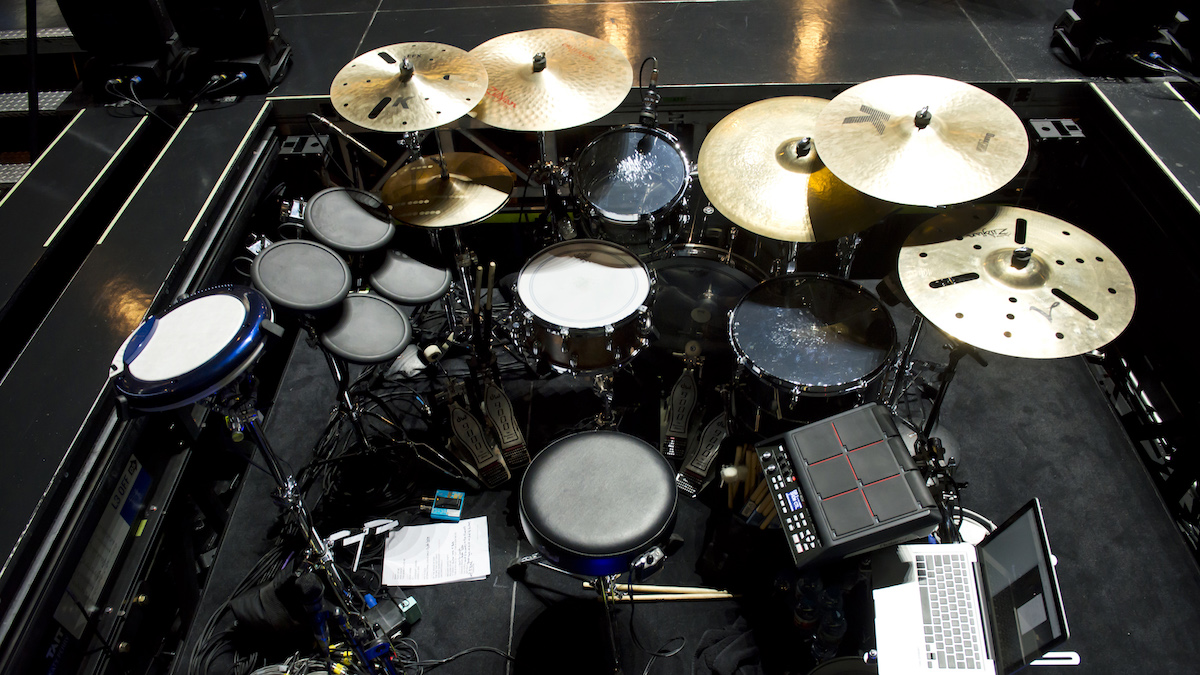
How should I set up my drum set?
Setting up your drum kit in the most ergonomic way possible from the start is arguably the most important thing you’ll ever do as a drummer. It lays the groundwork for everything you do, every sound you make and every song you rip on - so it’s worth spending the time to make sure you’re as comfortable as can be.
The first step is to get the bass drum sitting level, and adjusting your stool height so that you’re sat correctly. From here you can start placing your drums and cymbals so that everything is within easy reach, allowing you to hit them without needing to twist or become uncomfortable.
Think about how the angles of the drums will influence the way you hit them. Are your toms or bass drum miles away from your throne? Is everything easy to reach and to play? It’s all about ergonomics and efficiency at the end of the day. If something very simple feels uncomfortable, then the chances are you need to move stuff around a bit.
At best, a poorly set up drum set could be harder to play. At worst, it could lead to long-term injury.
Which brands make the best drum sets?
The world of drums and drum sets is an ever changing one, and whilst some companies come and go, there is a core group of brands which produce consistently impressive drums. The companies on this list all make great, versatile drums - but they all have certain qualities which make them more suited to specific styles of music or playing.
Gretsch drums are iconic in the music industry. With a firm grip on the world of jazz drums from the early days, and now a roster which includes Underoath's Aaron Gillespie, Green Day's Tre Cool, and Taylor Hawkins of Foo Fighters, Gretsch drums have been proven to cope with plenty of different playing and musical styles. Gretsch fans often comment on how warm, rich and resonant Gretsch drums are - great for anyone who wants a really full drum sound.
Tama drums are another brand which has a rich and interesting history. Made in Japan since the mid-'70s, Tama drums have had a varied catalogue of artists, from Vinnie Paul and Lars Ulrich to Billy Cobham and Peter Erskine. Currently, Tama drums are loved for their punchy and bright tones, thanks to Maple and Birch being commonly used in shells.
Pearl makes some of the world's most highly regarded drum sets around. With the Export drums being the best-selling drum set in history, they know a thing or two about creating a versatile, value-for-money drum set - and their Masters, Reference and Masterworks kits are some of the best high-end kits money can buy. Expect punchy drums that respond well to your playing dynamics - as most Pearl kits use Poplar, Mahogany or Maple for their shells.
Mapex is another brand who seems to create drum sets which work in nearly all musical scenarios. Its Saturn drum set is an industry favourite due to its maple/walnut shell materials, and the more affordable Mars, Armory and Storm kits follow in the 'ultimate versatility' footsteps. Mapex drums tend to be pretty lively sounding - all about that 'punch'.
Of course, there are many other brands we could list. Yamaha, Ludwig, DW, Sonor - the list could go on forever. They all make killer drums, which are great in their own right. Go and find out which ones are best for you!
What should I expect to pay for a drum kit?
On the whole, beginner-friendly kits should set you back anywhere up to about $/£750. You might be thinking that it seems like a lot of money, and to be honest it is - but there are so many different parts needed to get playing. It’s not like an acoustic guitar or beginner keyboard where you don’t need any extras to start off.
You need a set of drums, cymbal stands, a bass drum pedal, cymbals, a drum throne and sticks at the very least, and that can add up. In terms of materials and tones, budget kits will feature cheaper, unfussy shell material such as poplar. Although it may be cheap, it can sound genuinely killer - so there’s no shame in rocking some poplar tubs.
If you’re an intermediate-level player, then chances are you might have found a snare and cymbals that musically speak to you. If that’s the case, then you can expect to spend up to around $/£1,500 to get a worthy upgrade from your starter kit.
For these prices, you’ll have a larger choice of tonewoods - options like bubinga, walnut and mahogany will start making an appearance, as well as potentially some more exotic choices. You’ll still have your ‘standard’ birch and maple kits at this price point, so no worries if you’re not a wild one. Those woods get used an awful lot - and it’s because they sound killer.
For the experts (or the financially well-endowed) you’ll be looking at kits north of $/£1,500. The possibilities are virtually endless here. This price bracket encompasses some properly sophisticated, exceptional drum making, using some of the finest materials, and flawless finishing in the paint booth.
For those people where money is really no object, you can really go all out. Companies like Drum Workshop, British Drum Company and Yamaha will particularly satisfy your needs for some truly staggering drums, both tonally and visually. For this money, you can also start creeping into the world of custom-made drums.
How we test
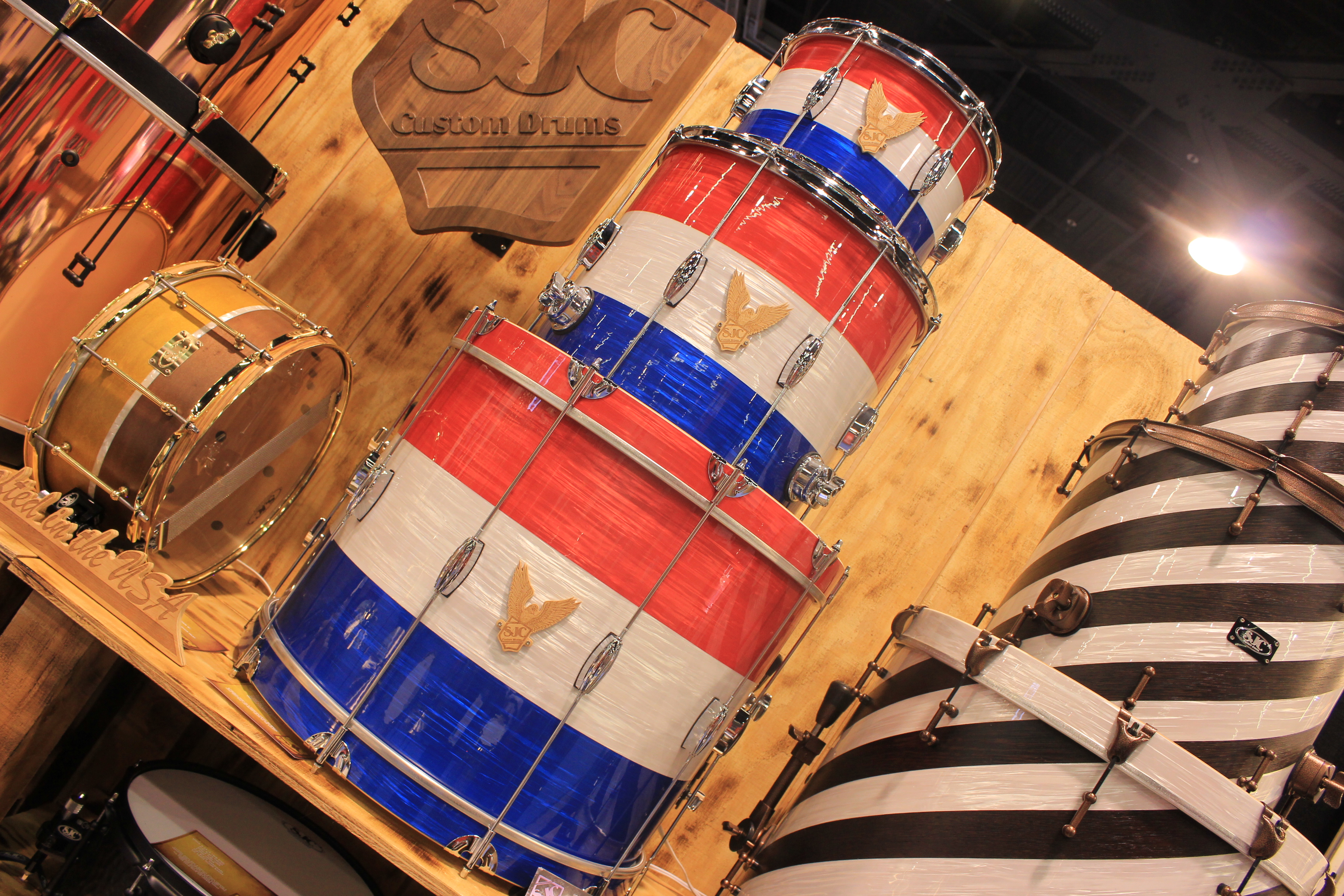
Our expert team of drummers has personally tested each drum kit in this guide, in a process that is editorially independent, free from influence by third parties.
The drum sets we review are tested in a variety of locations, whether that's our studio in Bath, at the homes of our reviewers, or in rehearsal spaces. We test for at least two weeks to ensure we get a good overview of the kits capabilities.
When we're conducting our testing we'll be looking at the following criteria:
- Build quality: We're looking for the overall quality and consistency in the build of the shells and any included hardware or cymbals. From the ply of the shells to the aplication of the lugs, each component of the kit is inspected closely both visually and physically to determine the quality of its construction.
- Usability: Next we'll set about putting the kit together, which helps us understand how easy it'll be for any user to configure the kit to their liking. We'll pay attention to how easy it is to put together, how much flexibility you get in terms of setup, and any clever hardware additions that will make life easier during its use.
- Sounds: With the kit put together, we'll finally get to playing the kit. Utilising various techniques and trying different styles we'll hit every inch of the kit from whisper soft to full on flams. This testing takes place over time and if possible, we'll also see how the kit plays with other instruments, ensuring we get a proper overview of its capabilties.
All of this testing enables to get a proper view of the kits capabilities, and it also keeps our reviews consistent between different testers. This informs the choices in our guides, allowing us to deliver a selection of kits that will be truly great for our readers.
Read more about how we test music making gear and services at MusicRadar.
Latest updates
18/06/25: The guide has received a top to bottom update. We've added labels for each entry to make it easier for readers to decide, added a quick menu navigation system, and expert verdict blocks for each of the top picks with links to a review. New sections include how to choose, FAQs, and how we test sections to further aid the readers buying decision.
Related buying guides
- Protect those ears! The best earplugs for musicians
- The best electronic drum sets under $500/£500
- Show the drummer some love with these Christmas gifts for drummers
Want all the hottest music and gear news, reviews, deals, features and more, direct to your inbox? Sign up here.
James is a freelance writer and former Junior Deals Writer at MusicRadar. Before writing, James worked as a guitar salesman at a local music store, so he knows a thing or two about matching people with their perfect instruments. James also has experience working in other areas of the music trade, having worked for the online music distributor, RouteNote. James is a guitarist, bassist and drummer and has also toured the UK and Europe with his old band Hypophora.
- Matt McCrackenJunior Deals Writer
- Stuart WilliamsDrums
- Chris Barnes
